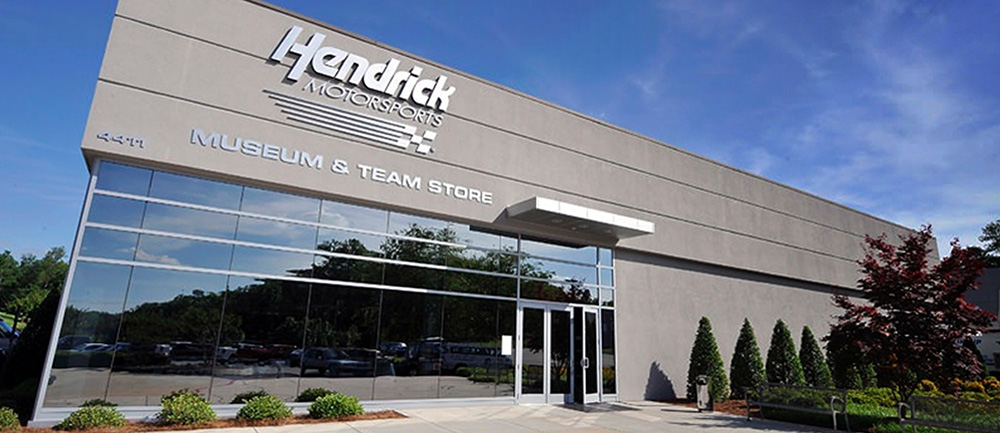
CONCORD, N.C. -- After NASCAR announced dirt racing would return to the Cup Series for 2021 in a one-off race at Bristol Motor Speedway, drivers, teams and fans alike wondered how the field would adapt to the old-school style of racing in high-tech stock cars.
“You’re going to be more similar to short-track racing,” No. 48 crew chief Greg Ives said. “You don’t have the fancy pit boxes; you’re kind of going back to grassroots (racing). Fortunately for (driver) Alex (Bowman) and myself, we have a lot of roots that run deep in that short-track mentality.”
BRISTOL DIRT MERCHANDISE NOW AVAILABLE
Other questions include how will Cup cars handle a dirt track? Won’t the dirt affect the performance of the vehicles? How will pit stops work? What do the car modifications mean? We have everything you need to know about this Sunday’s upcoming dirt race.
BEFORE THE RACE AND FORMATTING:
The dirt race at Bristol will have practice and qualifying heat sessions. While there are practices and qualifying for seven other races this year amid the COVID-19 pandemic, the Bristol pre-race activities will look a little different.
NASCAR will hold two 50-minute practices, or ‘hot laps,’ on Friday for drivers to get a feel for the track. On Saturday, four 15-lap heats will run to determine the drivers’ starting order. NASCAR is using a formula combining where a driver places in their respective heat with how many cars he passed during the heat. These “passing points” will be tallied and combined with any points garnered from the driver’s finish position in the heat. A first-place finish in the heats earns 10 points, second place earns nine, and so on down to 10th place earning one point. If there is a tie in heat points, the current team owner points will serve as a tiebreaker.
A random drawing will take place Wednesday afternoon that will dictate which heat each Cup driver will be in. During the race, the choose rule will not be implemented since it would be nearly impossible to keep the orange cone, or “V,” visible with the dirt.
THE TRACK:
With both the Cup Series and NASCAR Truck Series running on dirt at Bristol this weekend, the track is going to change quickly from the practice runs on Friday to the Cup Series race on Sunday. The air titans won’t be brought out between the events. Instead, water trucks will be used to keep the track moist and the dirt/clay/sawdust combination supple amid the changing weather and event being run over the weekend.
The key for the drivers will be to stick to the damper parts of the track for better grip while avoiding the dry particles that will accumulate up the banks throughout the race. This likely will cause some traffic jams.
"I think you’re going to see a lot of five-wide, three-wide racing,” No. 24 crew chief Rudy Fugle said. “Just pretty intense; door-to-door, bumper-to-bumper. You’ll have to be able to survive those to finish the race.”
THE CAR:
Unless a driver is a dirt pro, switching from the concrete surface to a dirt one at Bristol will present many challenges. NASCAR has allowed teams to adjust the Cup cars and implement a taller, narrower spoiler, more reinforcement bars in case the car slides, and an optional splitter. Teams will be allowed to have a mesh or screen coverings over ducts to help keep the dirt out of the systems. Goodyear also will distribute a specialized tire made for dirt racing that will help the cars from losing their grip as easily.
“We really have to prepare for a worst-case scenario,” No. 5 crew chief Cliff Daniels said. “If it is rough and bouncy, there’s strength and durability of suspension components that you really have to put high on your priority list, more so than what we typically would do at an asphalt race.
“Part of laying out the chassis, laying out the suspension is, first, looking at the strength and durability, and then NASCAR has a had a few small iterations of what the aero package is going to like. How to build the bodies, what that’s going to look like with the few changes with the splitter and spoiler and some of the underneath structure (and) the nose. What does that look like? How do we build around that? Are there other factors of if the dirt surface gets really rutted out and you have contact with the dirt? That’s all much different than what we would typically experience.”
NON-ACTIVE PIT STOPS:
How can a pit stop not be active? The format of this race will not allow pit stops under green nor yellow unless a car has some sort of issue. Instead, the field will be frozen between stages, meaning cars can’t gain or lose spots on pit road. The normal pit crews will not be on hand; instead, the teams’ road crews will jumping over the wall to fix any mechanical issues the car might have from the rough track.
Each car will have three minutes between stages on pit road to make any tweaks. That includes fixing damage, changing tires, getting fuel and making any other necessary adjustments. For this reason, the stages of the 250-lap race are no longer than the average fuel window. The first two stages are 75 laps while the final segment is 100.
“We are working through the coordination of the equipment and how we get that to the track,” No. 9 crew chief Alan Gustafson explained. “We still have to be prepared in case we get a flat tire and who is going to change the tire because our normal pit crew isn’t going to be there.”
With the litany of changes to the setups, the cars, the track and the pit stops, Sunday’s race at Bristol is bound to entertain. The event will begin at 3:30 ET on FOX.







